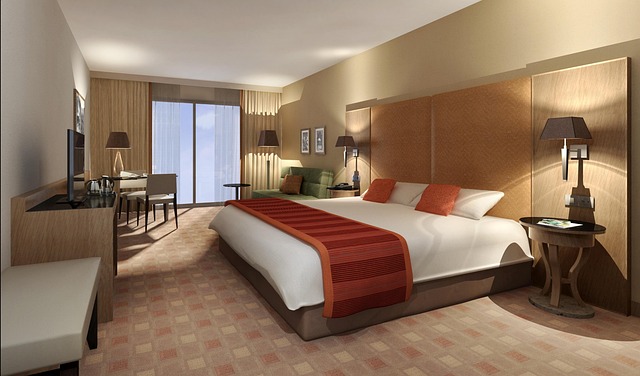AR and VR technologies revolutionize 3D CAD architectural visualization, enabling immersive experiences for clients, enhancing design accuracy, fostering collaboration, streamlining construction processes, and transforming how buildings are conceptualized and experienced.
“The future of architecture and design is here, with the groundbreaking integration of Augmented Reality (AR) and Virtual Reality (VR) technologies. This transformative duo is revolutionizing how we visualize and interact with buildings before they’re even constructed. From AR’s real-world overlays for interactive design to VR’s immersive 3D CAD architectural visualization, these innovations are reshaping the building process. Explore these technologies’ potential in enhancing design, fostering collaboration, and unlocking new creative boundaries.”
Transforming Architecture: AR for Interactive Design
Augmented reality (AR) is revolutionizing the way architects and designers envision and communicate their creations, bringing a new dimension to the field of architecture. By integrating AR with 3D CAD architectural visualization, professionals can create immersive experiences that allow clients and end-users to interact with designs in real-time. This technology enables users to virtually walk through buildings, observe design details up close, and make informed decisions before construction even begins.
AR offers a more interactive and engaging approach compared to traditional 2D drawings or static 3D models. Architects can overlay digital information onto physical spaces, providing context and enhancing the understanding of a design’s aesthetic and functional aspects. With AR, clients can see how architectural elements will look and feel in their intended environments, making it easier to identify potential issues or make adjustments during the design phase. This interactive viewing experience fosters better collaboration between designers, builders, and clients, ultimately leading to more successful project outcomes.
Immersive Experiences: VR's Role in Visualization
Virtual reality (VR) has transformed the way we visualize and interact with digital spaces, especially in industries like architecture and design. With VR technology, professionals can create immersive experiences that allow clients to step into their future projects before construction even begins. This level of interaction enhances decision-making processes by providing a tangible sense of scale and spatial awareness.
In the realm of 3D CAD architectural visualization, VR offers a game-changer. It enables designers to craft intricate models and spaces that can be explored in three dimensions, offering a more realistic and engaging representation than traditional 2D drawings or static 3D renderings. This immersive approach facilitates better understanding, allowing clients to appreciate the design nuances and make informed adjustments.
Integrating Technologies: AR-VR for Enhanced CAD
The integration of Augmented Reality (AR) and Virtual Reality (VR) technologies is revolutionizing the field of Computer-Aided Design (CAD). By combining AR and VR, 3D CAD architectural visualization takes on a new dimension. Users can now interact with digital models in a real-world context, overlaying virtual structures onto physical spaces to assess their aesthetic and functional fit before construction begins.
This synergistic approach offers significant advantages over traditional 2D drafting methods. AR enhances design accuracy by providing a more intuitive understanding of spatial relationships, while VR allows for immersive walkthroughs, enabling clients and architects to collaborate more effectively. The result is a smoother design-to-construction process, reduced errors, and enhanced overall project outcomes in architectural visualization.
Future of Building: 3D CAD's Interactive Potential
The future of building design and visualization is set to be transformed by the integration of Augmented Reality (AR) and Virtual Reality (VR) with 3D CAD architectural models. This technology combines the precision and detail of 3D CAD architectural visualization with immersive, interactive experiences. Users can now explore and manipulate digital representations of buildings as if they were real, physical spaces. AR overlays digital elements onto the real world, allowing designers to see how structures would look and function in their actual environment, enhancing decision-making and client presentations.
VR takes this a step further by completely immersing users in a virtual realm, providing a chance to walk through and experience complex architectural designs before construction even begins. This interactive potential opens doors for more dynamic and creative building design processes, enabling architects to test and refine their concepts in a realistic, digital setting. As AR and VR technologies continue to evolve, they promise to revolutionize the way buildings are conceptualized, designed, and experienced.
The integration of augmented reality (AR) and virtual reality (VR) technologies is revolutionizing the way we interact with digital designs, particularly in architecture. As demonstrated through AR for interactive design, VR’s role in visualization, and their combination in enhanced CAD, these immersive technologies offer a glimpse into the future of building. 3D CAD architectural visualization is no longer static but dynamic, providing clients with interactive experiences that enhance understanding and engagement. With continued advancements, AR-VR will play a pivotal role in shaping the industry, making design processes more efficient and client interactions more captivating.
